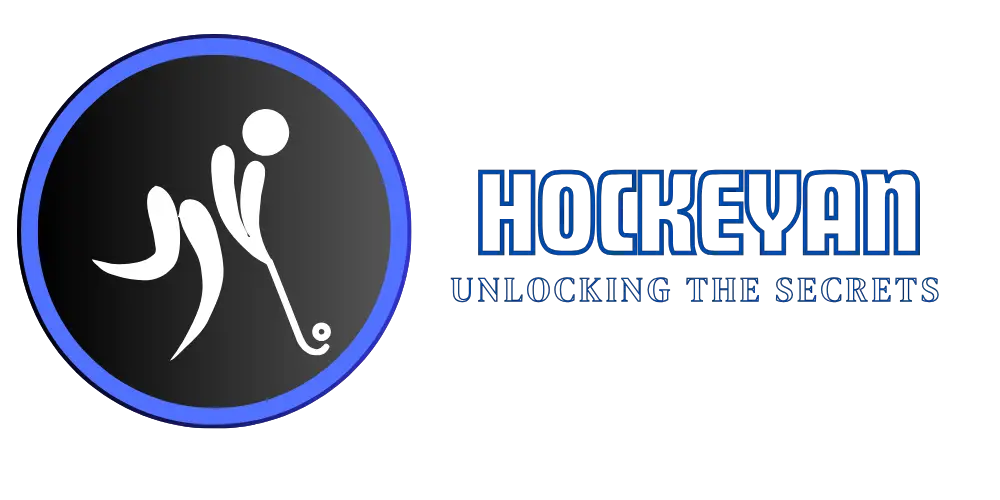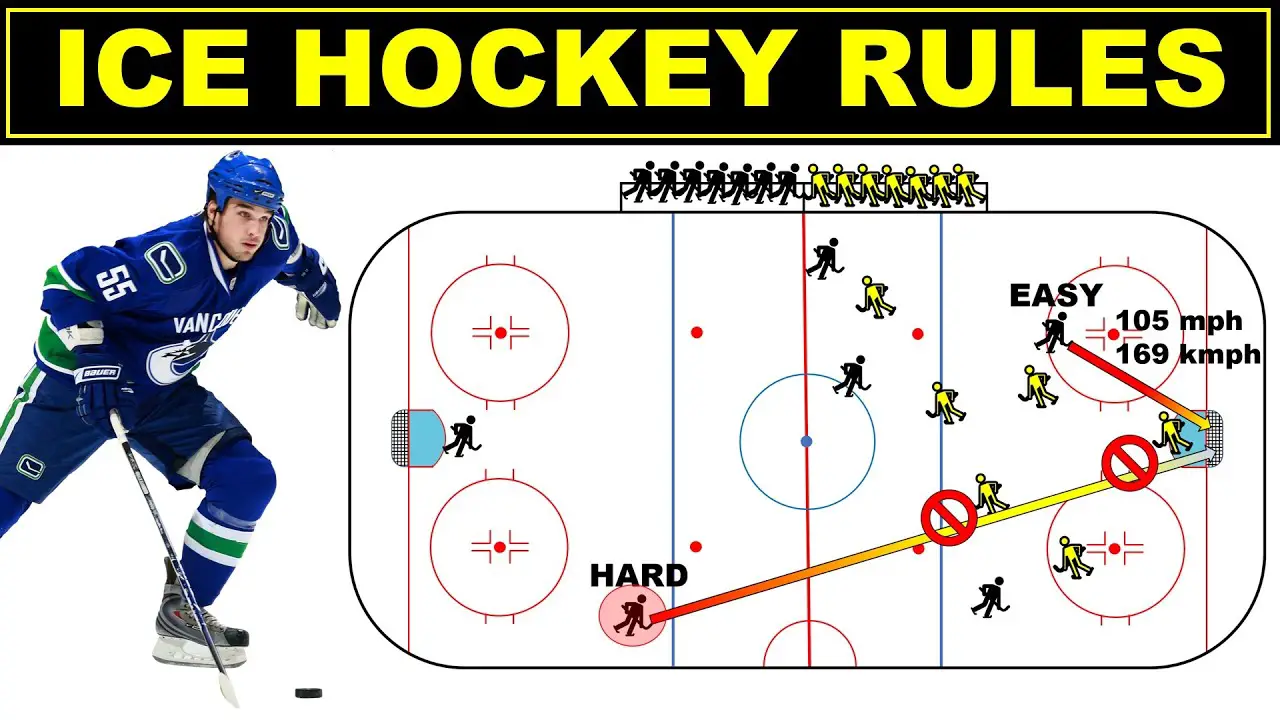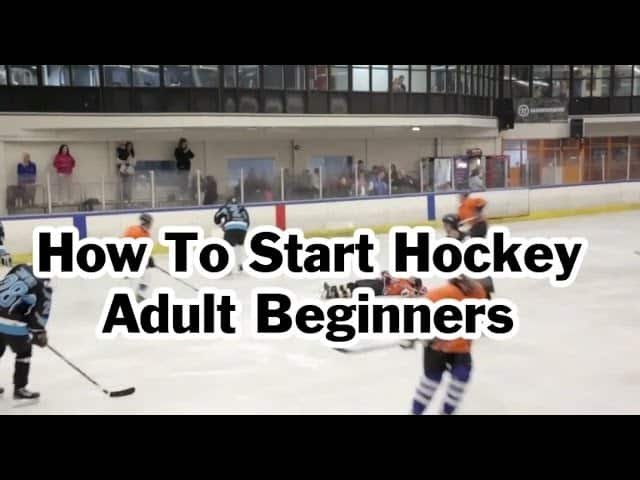Ice Hockey for Beginners! Ice hockey is a fast-paced sport played on ice. Players use sticks to hit a puck into the opponent’s goal.
Ice hockey requires speed, skill, and teamwork. Beginners should start by learning basic skating techniques. Proper skating forms the foundation for effective gameplay. Next, mastering stickhandling and passing is crucial. These skills help maintain control of the puck. Shooting accuracy is also important for scoring goals.
Learning the rules and positions enhances game understanding. Protective gear is essential for safety. Helmets, pads, and gloves prevent injuries. Practicing regularly builds confidence and improves skills. Watching professional games can provide valuable insights. Joining a local team or league offers practical experience. Ice hockey is challenging but rewarding. Enthusiasm and dedication make the learning process enjoyable.
Introduction To Ice Hockey
Ice hockey is a thrilling and fast-paced sport played on ice with skates. Players use sticks to hit a puck into the opponent’s goal. This guide will help you get started with ice hockey.
Brief History
Ice hockey began in Canada in the 19th century. The first indoor game was played in 1875. The sport quickly spread to other countries, and today, it is popular worldwide.
Basic Rules
Understanding the basic rules helps you enjoy the game. Here are some key points:
- Each team has six players on the ice.
- The game is played in three periods of 20 minutes each.
- Players skate on ice and use sticks to control the puck.
- The aim is to score goals by hitting the puck into the opponent’s net.
- Body checking is allowed but must follow safety rules.
Penalties are given for breaking rules. Common penalties include:
| Penalty | Description |
|---|---|
| Tripping | Using a stick to trip an opponent. |
| Hooking | Using a stick to hold an opponent. |
| Slashing | Hitting an opponent with the stick. |
Ice hockey is exciting and fun to learn. Start with these basics and enjoy the game!
Essential Gear
Starting ice hockey can be thrilling. Having the right gear is crucial. The right equipment ensures safety and enhances performance. Let’s explore the essential gear you need.
Skates
Skates are the most important part of your gear. Proper skates give you control and speed. You can choose skates that fit well. They should be snug but comfortable. Poorly fitting skates can cause blisters and hinder your performance.
Consider the following points while selecting skates:
- Fit: Should be snug with no pressure points.
- Blade: Ensure it is sharp and well-maintained.
- Support: Good ankle support is crucial.
Protective Equipment
Protective equipment keeps you safe on the ice. It covers key areas of your body, including your head, chest, and legs.
Here is a list of the necessary protective equipment:
| Item | Purpose |
|---|---|
| Helmet | Protects your head and face. |
| Shoulder Pads | Protects your shoulders and chest. |
| Elbow Pads | Shields your elbows from falls and hits. |
| Gloves | Protects your hands and wrists. |
| Pants | Guards your hips and thighs. |
| Shin Guards | Protects your knees and shins. |
Stick
Your stick is your main tool on the ice. It helps you control the puck and shoot. Choose a stick that matches your height and play style.
Consider these factors for selecting a stick:
- Length: Should reach up to your chin with skates on.
- Flex: Choose the right stiffness based on your strength.
- Blade Curve: Different curves suit different play styles.
Having the right gear ensures you play safely and effectively. Invest in quality equipment for the best experience.
Basic Skating Skills
Ice hockey is an exciting sport that requires mastering basic skating skills. For beginners, learning to skate well is crucial for success. This section covers the fundamental skills for forward, backward, and stopping techniques. Let’s dive into the basics!
Forward Skating
Forward skating is the first skill you need to learn. Start by standing with your feet shoulder-width apart. Bend your knees slightly and keep your back straight. Push off with one foot while gliding on the other. Alternate feet to maintain balance and speed. Practice this until you feel comfortable and steady.
Backward Skating
Backward skating might seem tricky at first, but it’s essential. Begin by positioning your feet in a V-shape, with heels together and toes pointing outward. Push off with one foot and glide backward. Keep alternating feet for a smooth motion. Bend your knees and maintain a low center of gravity to stay balanced.
Stopping Techniques
Stopping is a critical skill for safety on the ice. There are different ways to stop:
- Snowplow Stop: This technique involves pushing your heels outward while keeping your toes together. It creates friction and slows you down.
- Hockey Stop: Turn your body sideways and dig the edges of your skates into the ice. This quick stop is often used by experienced players.
Practice these stopping techniques regularly. They will help you gain control and confidence on the ice.
Stick Handling Basics
Ice hockey is a fast-paced and exciting sport. For beginners, learning the basics of stick handling is crucial. Mastering these skills will help you control the puck and improve your overall game. Let’s dive into the fundamental aspects of stick handling.
Grip And Stance
Your grip and stance are the foundation of good stick handling. Ensure your hands are positioned correctly on the stick. The top hand should grip the stick firmly, while the bottom hand should hold it more loosely for better control.
Stand with your feet shoulder-width apart. Bend your knees slightly to stay balanced. Keep your back straight and your head up. This stance allows for better movement and control on the ice.
| Element | Description |
|---|---|
| Top Hand | Firm grip |
| Bottom Hand | Loose grip |
| Feet | Shoulder-width apart |
| Knees | Slightly bent |
| Back | Straight |
| Head | Up |
Puck Control Drills
Practicing puck control drills will improve your stick handling skills. Start with basic drills and gradually move to more advanced ones. Here are some beginner drills:
- Figure Eight Drill: Move the puck in a figure-eight pattern around two cones.
- Toe Drag Drill: Use the toe of your stick to drag the puck towards you.
- Stationary Stick Handling: Stand still and move the puck back and forth quickly.
- Weaving Drill: Weave the puck in and out through a line of cones.
Consistent practice of these drills will enhance your puck control. Always remember to keep your head up to see the ice better and make smart plays.
Passing And Shooting
Passing and shooting are vital skills in ice hockey. These skills help you move the puck and score goals. Learning these can make you a better player.
Types Of Passes
There are several types of passes in ice hockey. Each type has its own use.
- Forehand Pass: This is the most common pass. Use the front of your stick to pass the puck.
- Backhand Pass: This pass uses the back of your stick. It’s useful for quick, short passes.
- Saucer Pass: Lift the puck off the ice. This helps avoid opponents’ sticks.
- One-Touch Pass: Pass the puck quickly with one touch. This keeps the game fast.
Shooting Techniques
Good shooting techniques are crucial for scoring goals. Learn different types of shots to become a versatile player.
- Wrist Shot: This shot is quick and accurate. Use your wrist to flick the puck.
- Slap Shot: This is a powerful shot. It requires a big wind-up and swing.
- Snap Shot: Combine the wrist shot and slap shot. It’s quick and powerful.
- Backhand Shot: Use the back of your stick. This shot is tricky for goalies to stop.
| Pass Type | Description |
|---|
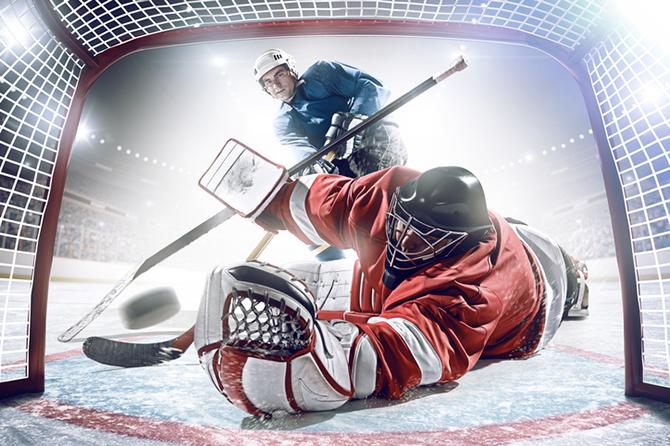
Credit: www.owayo.com
Understanding Positions
Ice hockey is an exciting and fast-paced sport. Knowing player positions is crucial for beginners. Each position has unique roles and responsibilities. Let’s dive into the main positions: forwards, defensemen, and goaltenders.
Forwards
Forwards are the main attackers in ice hockey. They aim to score goals. There are three types of forwards:
- Center: The center plays in the middle. They assist both offense and defense.
- Left Wing: The left wing attacks from the left side.
- Right Wing: The right wing attacks from the right side.
Forwards must skate quickly and handle the puck well. They often lead the charge towards the opponent’s goal.
Defensemen
Defensemen protect their team’s goal from opposing attackers. There are two types of defensemen:
- Left Defenseman: The left defenseman covers the left side of the ice.
- Right Defenseman: The right defenseman covers the right side of the ice.
Defensemen block shots and clear the puck from their zone. They must be strong skaters and good at passing.
Goaltenders
Goaltenders, or goalies, have the most important job. They stop the puck from entering the net. Goaltenders wear special gear for protection.
Goalies need quick reflexes and strong focus. They often determine the outcome of the game.
Understanding these positions helps beginners play better. Each position is vital for team success.
Game Strategies
Ice hockey is a thrilling sport that demands quick thinking and strategic planning. For beginners, understanding key game strategies can make a significant difference. Mastering offensive, defensive, and special team tactics is crucial for a well-rounded player.
Offensive Tactics
Strong offensive tactics are vital for scoring goals. Positioning and puck control are key elements. Players must learn to read the game and anticipate the opponent’s moves.
- Breakouts: Quickly moving the puck from your zone to the opponent’s zone.
- Passing: Accurate passing can outsmart defenders and create scoring chances.
- Forechecking: Pressuring the opponent in their zone to regain puck control.
Practicing these tactics will help beginners improve their offensive game and score more goals.
Defensive Tactics
Defensive tactics are crucial for preventing the opponent from scoring. Players must focus on positioning and team coordination.
- Backchecking: Helping your defense by skating back quickly.
- Shot Blocking: Positioning yourself to block the opponent’s shots.
- Clearing: Safely moving the puck out of your defensive zone.
Effective defensive play can turn the tide of the game in your favor.
Special Teams
Special teams play a vital role in ice hockey. They handle power plays and penalty kills.
| Special Team | Objective |
|---|---|
| Power Play | Score a goal while having a player advantage. |
| Penalty Kill | Prevent the opponent from scoring when you are short-handed. |
Understanding and practicing these situations help players excel during crucial moments.

Credit: www.owayo.com
Joining A Team
Joining a team is an exciting step for any ice hockey beginner. It offers a chance to improve skills, make friends, and experience the thrill of the game. Understanding how to find and join a team can make the process smoother and more enjoyable.
Finding Local Leagues
Start by searching for local leagues in your area. Community centers, ice rinks, and sports clubs often have information on leagues. Visit their websites or call them to ask about beginner-friendly teams.
Consider joining a recreational league. These leagues are great for new players. They focus on fun and learning, rather than competition. This environment can help you develop your skills without pressure.
Check social media groups and forums dedicated to ice hockey. Many players and teams post about open spots or upcoming seasons. It’s a great way to find opportunities and connect with other players.
Team Tryouts
Most teams hold tryouts to assess new players. Don’t be nervous. Tryouts are a chance to showcase your skills and enthusiasm. Arrive early, bring your gear, and stay positive.
During tryouts, focus on the basics: skating, passing, and shooting. Coaches look for players who can follow instructions and show potential. Even if you don’t make the team, it’s a valuable learning experience.
Prepare for tryouts by practicing regularly. Work on your fitness and ice hockey skills. Confidence comes from preparation. The more you practice, the better you’ll perform during tryouts.
Building Team Chemistry
Once you join a team, building team chemistry is key. Get to know your teammates. Spend time with them off the ice. This helps build trust and camaraderie.
Communication is crucial. Talk to your teammates during practice and games. Share feedback and encouragement. Good communication leads to better teamwork and success on the ice.
Participate in team activities. Many teams organize events like dinners, outings, or team-building exercises. These activities strengthen bonds and create a positive team atmosphere.
Always stay positive and supportive. Encourage your teammates and celebrate successes together. A positive attitude can inspire the whole team and improve performance.
Staying Safe
Ice hockey is an exciting sport, but safety is crucial. Beginners must learn to stay safe on the ice. This section covers key areas to help prevent injuries.
Preventing Injuries
Injuries can be common in ice hockey. Wearing the right gear helps a lot. Here are some tips:
- Helmet: Always wear a hockey helmet with a face mask.
- Padding: Use shoulder pads, elbow pads, and knee pads.
- Skates: Ensure your skates fit well and are tied tightly.
- Mouthguard: Protect your teeth with a mouthguard.
- Gloves: Wear thick gloves for hand protection.
Proper Warm-up
Warming up is very important before playing. It helps your muscles get ready. Here is a simple warm-up routine:
- Stretching: Stretch your arms, legs, and back.
- Jogging: Jog in place for five minutes.
- Stickhandling: Practice moving the puck with your stick.
- Light Skating: Skate around the rink slowly.
Following Rules
Following the rules keeps everyone safe. Here are some important rules:
| Rule | Why It Matters |
|---|---|
| No Checking | Reduces the risk of injuries. |
| No High Sticks | Prevents face and eye injuries. |
| Follow the Referee | Ensures fair and safe play. |
| Be Aware | Watch for other players to avoid collisions. |
By following these guidelines, beginners can enjoy ice hockey safely.
Improving Skills
Ice hockey is a thrilling and fast-paced sport. As a beginner, improving your skills can be incredibly rewarding. With dedication and practice, you can see significant improvements in your game. This section will guide you through key areas to focus on.
Practice Routines
Regular practice is essential for skill development. Create a routine and stick to it. Focus on fundamental skills like skating, stickhandling, and shooting.
- Skating: Practice different skating techniques. Work on forward skating, backward skating, and stopping.
- Stickhandling: Use cones or pucks to create obstacles. Practice moving the puck around them.
- Shooting: Aim for different targets on the net. Practice wrist shots, slap shots, and backhand shots.
Watching Professional Games
Watching professional games can be incredibly educational. Observe how players position themselves and move. Pay attention to their strategies and techniques.
- Watch how professionals skate and handle the puck.
- Notice the teamwork and communication on the ice.
- Observe defensive and offensive plays.
You can learn a lot by watching the pros. Try to apply what you see to your own practice.
Seeking Coaching
A good coach can make a big difference. Seek coaching to get personalized advice and feedback. Coaches can help you identify areas for improvement.
They can also provide structured training sessions. This can help you stay on track and make consistent progress.
| Benefits of Coaching |
|---|
| Personalized Feedback |
| Structured Training |
| Motivation and Support |
Whether you join a local team or take private lessons, coaching is invaluable for skill improvement.
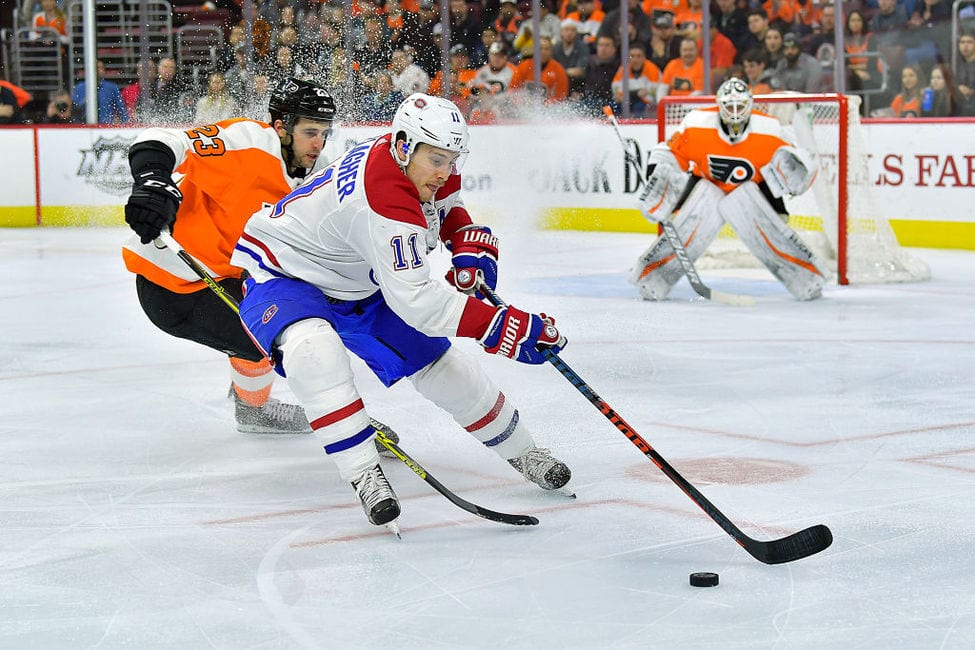
Credit: thehockeywriters.com
Frequently Asked Questions
What Equipment Do I Need For Ice Hockey?
To play ice hockey, you’ll need skates, a helmet, pads, gloves, and a stick. Protective gear like a mouthguard and shin guards are also essential. Ensure your equipment fits well to avoid injuries.
How Do I Start Playing Ice Hockey?
Begin by learning basic skating skills. Join a local beginner’s league or take lessons. Practice regularly to improve. Watching games can also help you understand the rules and strategies.
What Are The Basic Rules Of Ice Hockey?
Ice hockey has three periods, each lasting 20 minutes. The objective is to score goals by hitting the puck into the opponent’s net. Players must avoid penalties like tripping or high-sticking.
How Can I Improve My Ice Hockey Skills?
Practice regularly on and off the ice. Focus on skating, puck handling, and shooting. Watching professional games and learning from experienced players can also help.
Conclusion
Starting ice hockey can be a thrilling experience. Remember to practice regularly and focus on fundamental skills. Joining a local team can provide support and motivation. Always prioritize safety by wearing proper gear. With dedication, you’ll improve quickly and enjoy the game even more.
Embrace the journey and have fun on the ice!
